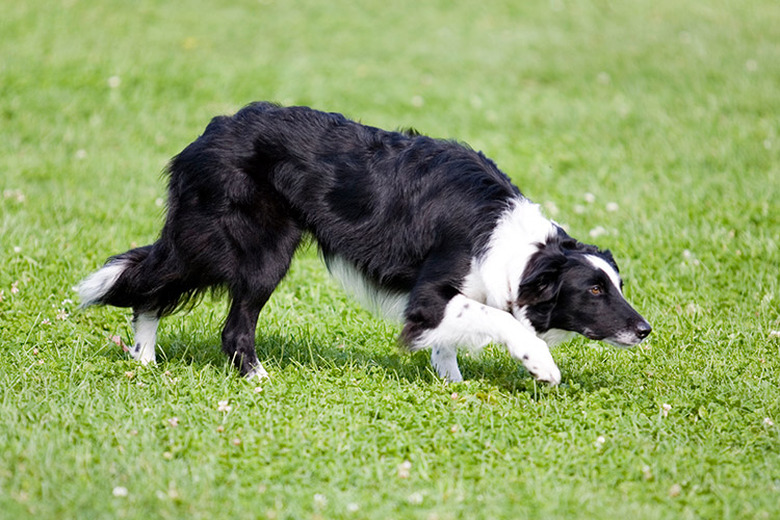What Does It Mean When A Dog Stalks Other Dogs?
If you reside in a multi-dog home, not many things are more frustrating and stressful than conflict between your furry pals. Talk about a tense living atmosphere! When a dog engages in stalking behavior towards another, it can mean anything from classic predatory behavior to a simple, harmless desire for play.
Playtime
Stalking can also be a fun and jolly behavior rather than a threatening and ominous one. If your dog seems to be closely following another, it could be as simple as him wanting to enjoy a good, old-fashioned, energetic play session. Be attentive to any key body language clues that point to play, including a comfortable and loose body posture and an open mouth.
Smaller Dogs
If a dog is stalking another canine, it very often is one of a small-sized breed — think a Yorkshire terrier, Chihuahua or Maltese rather than a German shepherd, pit bull or rottweiler, perhaps. This may be due to the reaction that stalking a wee dog yields, which is typically a sound akin to a terrified shriek or squeal. Smaller dogs also frequently have the tendency to attempt escape when in perilous situations. All of these actions serve to remind the "stalker" of typical varieties of prey, whether foxes, squirrels, raccoons, skunks or bunny rabbits.
Cause For Concern
Although it is not very common for canines to view those of the same species as prey, it occasionally does happen, notes the ASPCA. When your dog is obsessively following another fluffy member of your household, it could be a sign that he considers the victim to be his prey. Yikes! If so, then intervention and training is needed.
To find out if you've got a predatory problem on your hands, pay close attention when a doggie is in stalking mode as his behavior could very quickly turn physical. Predatory canines usually move around very slowly and silently in order to be stealth and abrupt, with the primary goal being a shake and painful bite of the unsuspecting other doggie. Since the point of being a predator is essentially to be sneaky and sly, you won't hear any conspicuous barking or growling sounds coming from the stalker, so watch out.
By Naomi Millburn
References
Humane Society of Broward County: Multi-Dog Households
ASPCA: Predatory Behavior in Dogs
ASPCA: Choosing Playmates for Your Dog
ASPCA: Dog Parks
The Merck Manual for Pet Health: Behavior Problems in Dogs
The Merck Veterinary Manual: Behavioral Problems Associated With Canine Aggression
About the Author
Naomi Millburn has been a freelance writer since 2011. Her areas of writing expertise include arts and crafts, literature, linguistics, traveling, fashion and European and East Asian cultures. She holds a Bachelor of Arts in American literature from Aoyama Gakuin University in Tokyo.
